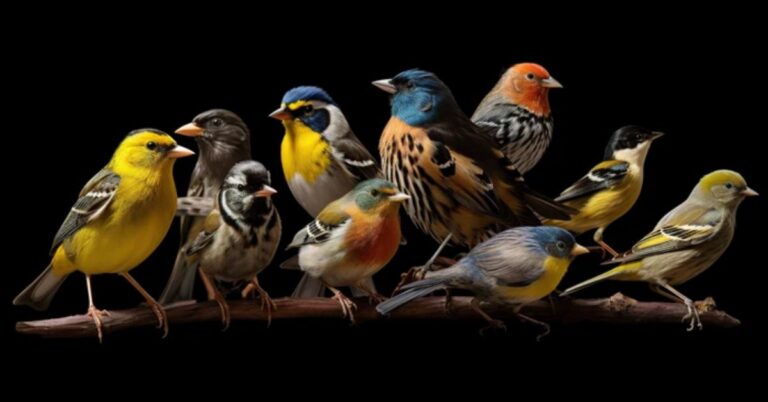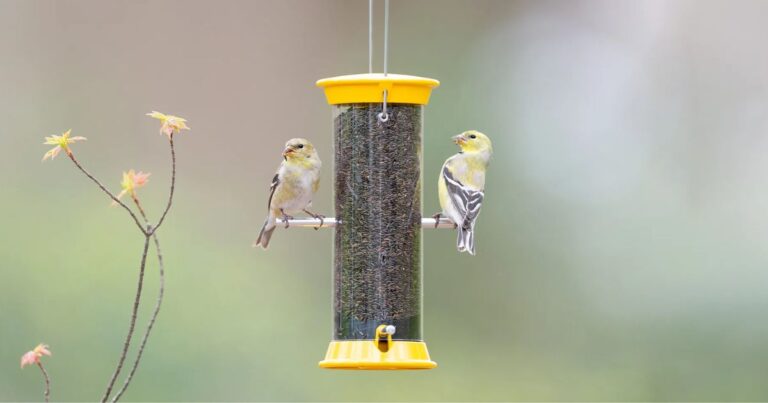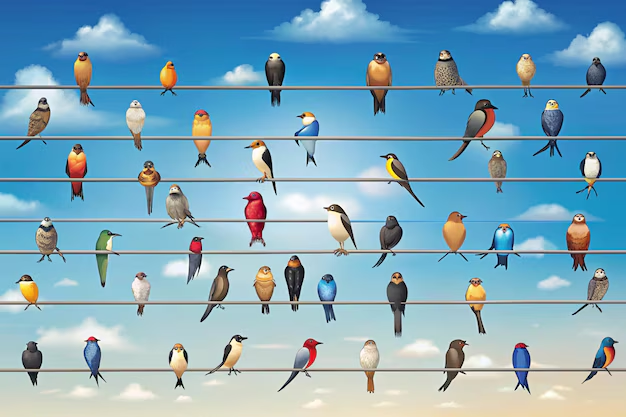Unique Information: About What is a Group of Turkeys Called?
What is a Group of Turkeys Called? A group of turkeys is commonly referred to as a “rafter.” This term is often used to describe a gathering of these birds, especially when they are seen together in the wild or on farms. The origin of the term is somewhat unclear, but it adds a bit of charm to the way we refer to these social animals.
In addition to “rafter,” you might also hear the term “gobble” used informally to describe a flock of turkeys. Regardless of what you call them, these birds are known for their distinctive vocalizations and social behaviors, often seen foraging and communicating with each other in their natural habitats.
The Collective Noun For Turkeys
We will discover What is a group of turkeys called?
When considering the collective noun for turkeys, many may default to flock, but in a delightful twist of language, the term rafter emerges as a more colorful choice.
This vivid imagery evokes the image of turkeys gathering together, akin to an assembly of feathered characters ready for a theatrical performance.
It’s fascinating how such terms can change our perception, transforming these often-overlooked birds into figures with personality and charm.
What Is a Group Of Turkey Chicks Called?
When it comes to a group of turkey chicks, they are typically known as a brood or clutch. These fluffy and curious little creatures stick together closely under the watchful eye of their mother, learning essential survival skills and forming strong bonds within the group. As they grow, the bond between these turkey chicks becomes evident in their synchronized movements and communal instincts.
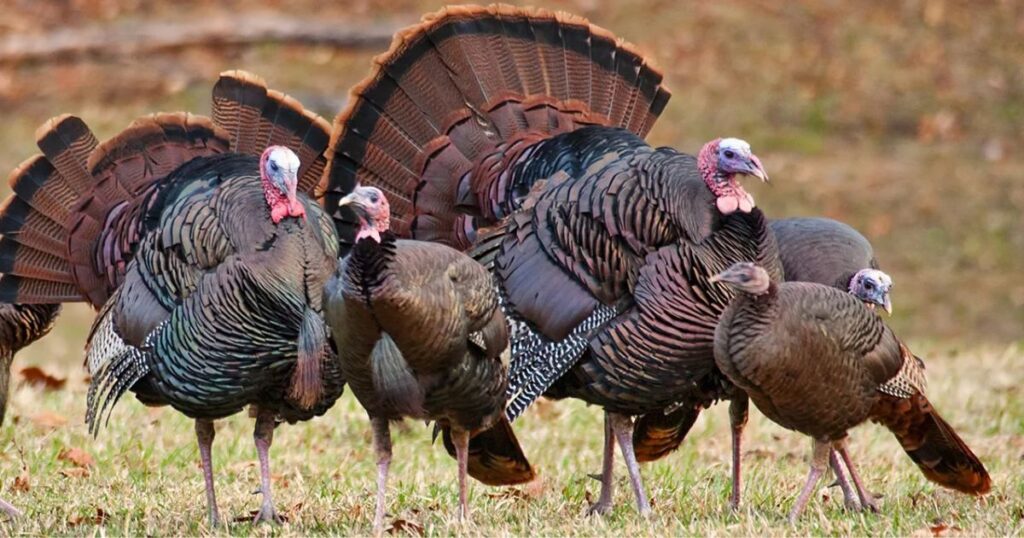
Moving on to adult turkeys, a gathering of these majestic birds is commonly referred to as a flock or rafter. This collective noun reflects the social nature of turkeys, who prefer to stay close together for protection and companionship. Within a rafter of turkeys, complex hierarchies develop, with dominant birds taking charge while others follow suit in an intricate dance of cooperation and communication.
Terminology for Groups of Turkeys
Is it a flock, a gaggle, a rafter, a gang or a brood of turkeys? Well, the answer is, that all of the above are correct, but each term is used in slightly different contexts.
General Term
When talking about a gathering of turkeys, both in the wild and on a turkey farm or homestead, it’s fine to simply call them a flock.
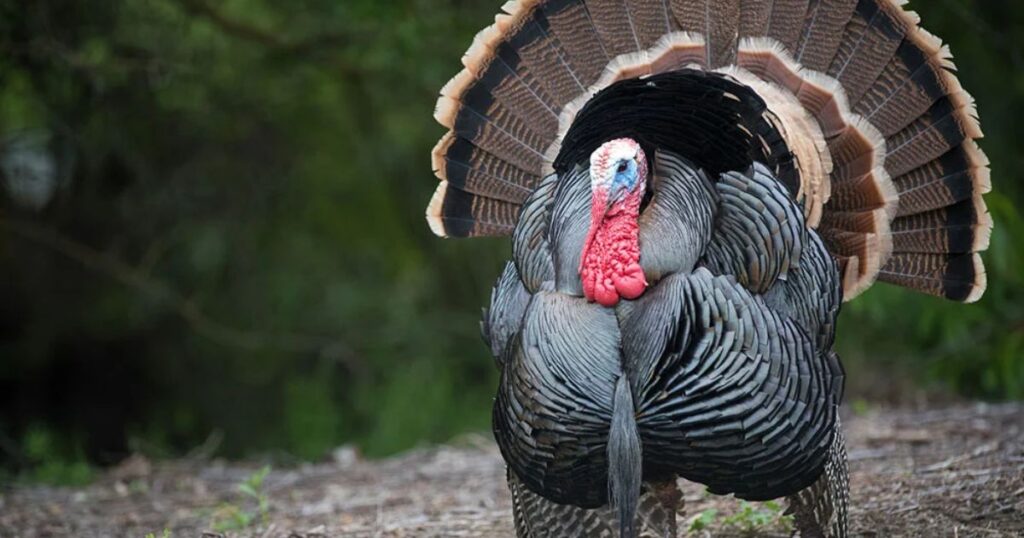
Specific Terms
Historically, groups of domesticated turkeys were known as rafters. This term is not in common usage today, although it is still used among turkey farmers. It’s unclear exactly when this term originated, one theory is that the name comes from a turkey’s habit of roosting up high overnight, in the rafters or eaves of a barn, or in the wild in the branches of a tree.
Another name for a gathering of turkeys is a ‘gang’, or less commonly a ‘mob’. This refers to the noisy and sometimes intimidating behavior when large groups of young and older male turkeys assemble.
Occasionally a group of noisy turkeys may also be called a ‘gaggle’, calling out the loud, gobbling sounds that are characteristic of a large gathering of turkeys (and geese!).
Juvenile Groups
Groups containing young turkeys are often referred to as broods and consist of a female, with several young.
Turkeys on the Farm vs. Wild Turkeys
There are between 6 and 7 million wild turkeys living in the US, present in every state except Alaska. In comparison, around 210 million turkeys are estimated to be being raised in captivity on around 2,500 farms across the country. In the wild, turkey groups form naturally, with well-established pecking orders based on age, size and dominant status.

Turkeys raised commercially are separated into male and female groups after hatching, and their entire social system is structured according to their age and life stage. Turkey eggs are brooded in incubators, rather than by brooding females, and the natural hierarchy of mixed groups is absent.
Observing Turkey Groups in Nature
Wild turkeys are most common in the central and eastern parts of the United States, especially Alabama, Texas, Missouri, Kansas, and Wisconsin.
Turkeys thrive in a wide range of habitats, including woodlands, open pastures and agricultural fields. Woodlands provide useful cover from predators while foraging, and perching spots for overnight roosting.
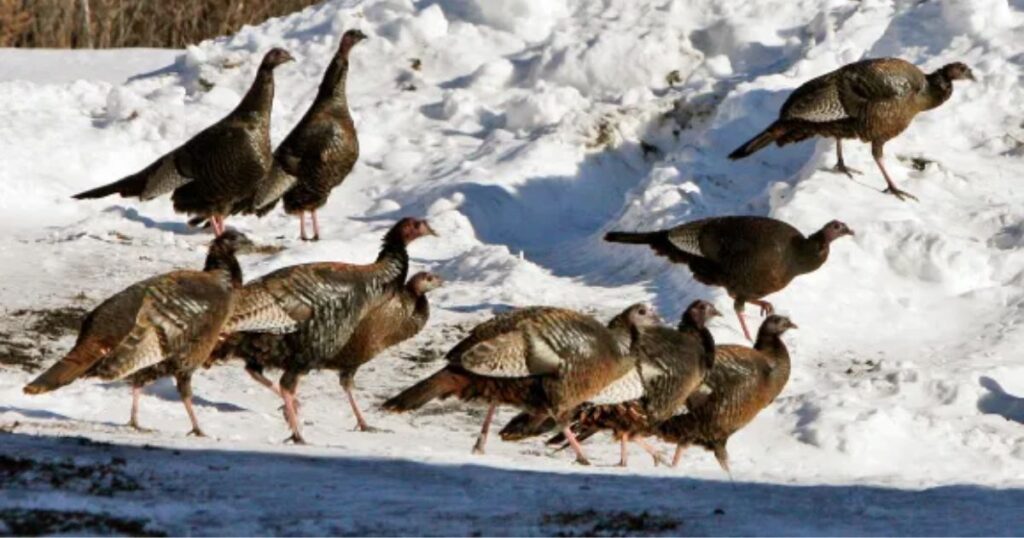
At dusk, wild turkeys ascend to roosting spots off the ground, particularly in the branches of trees around the edges of fields or pastures.
The Turkey’s Role in Ecosystems and Culture
Turkeys represent abundance, gratitude and a sense of close family, and have been a central part of Thanksgiving celebrations since the 1800s.

Domestic and commercial turkeys make a significant impact on the US economy, with nearly 400,000 jobs and a direct financial contribution of around $36 billion annually.
Turkeys are not only valued as a source of food but have wider cultural significance. Their feathers were used in Native American art, and their bones served as tools and decorations.
Conservation and Human Interaction
From the brink of becoming a threatened species, turkey populations have boomed to an impressive 7 million wild birds. Concerted conservation efforts have included the creation of protected reserves, reintroduction schemes, and reforestation programs, which have succeeded in providing safe habitats for feeding and breeding.
If you find yourself crossing paths with a flock of wild turkeys, it’s important to behave in an ethical and considerate way, so as not to cause any stress or distress. It’s wise to keep a safe distance, keep dogs on leads, and not make any rushed movements.
A flock of Wild Turkeys foraging in grassland. From the brink of becoming a threatened species, turkey populations have boomed to an impressive 7 million wild birds.
Other terms for a group of Turkeys
- A brood of turkeys
- A crop of turkeys
- A death row of turkeys
- A dole of turkeys
- A dule of turkeys
- A gang of turkeys
- A herd of turkeys
- A mob of turkeys
- A muster of turkeys
- A posse of turkeys
- A raffle of turkeys
- A raft of turkeys
- A school of turkeys
- A Thanksgiving of turkeys
- A run of (wild) turkeys
- A bachelor group of (wild male) turkeys
- A posse of (wild male) turkeys
And Also Read Peregrine Falcon: Fastest Bird and Conservation Success
Conclusion
What is a group of turkeys called? Whether it’s a flock, gaggle, rafter, gang, posse or brood, there’s no denying that a gathering of turkeys is an impressive and noisy sight, both in the wild and in farmyard settings. If you’ve enjoyed wading through the theories behind the collective nouns used for groups of turkeys, you might be interested in learning more about the specific names used for other groups of birds.
FAQs
What Do We Call a Group Of Turkeys?
A group of turkeys is commonly referred to as a rafter. This term is often used in both casual conversation and wildlife management contexts.
How Many Turkeys Are In a Group?
Turkeys are social birds that often form groups, known as flocks. Wild turkeys typically gather in flocks ranging from 5 to 20 individuals,
How Fast Can Turkeys Fly?
Turkeys are surprisingly agile birds, capable of short bursts of flight. Wild turkeys can fly at speeds reaching up to 55 miles per hour (about 89 kilometers per hour) for short distances, typically around 100 to 200 yards.
Why Do Turkeys Gather?
In the wild, turkeys are social birds that often form flocks, which provide safety in numbers against predators. By sticking together, they can better watch for danger and communicate threats through vocalizations.


